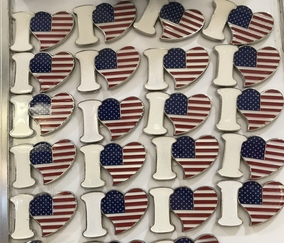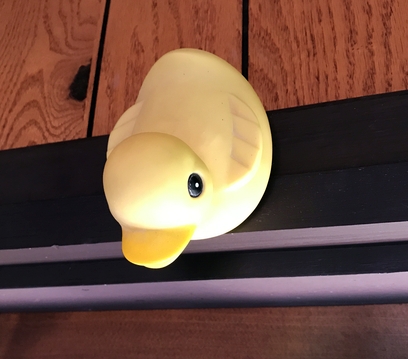
| Go to
web site main page, learning resources index. |
Content Created: 2017-05-17. File last modified: |
Human beings have known how to write for slightly over 5000 years. Probably longer. So influential has writing become for us today that people sometimes even confuse writing with language. If I ask someone how many vowels there are in English, I am likely to be told that there are five (a, e, i, o, and u —some people add y as an afterthought). That is the number of vowel symbols used to write English. The number of vowels used to speak English is considerably more. Indeed, linguists count about fifteen for most standard English dialects.
People say five because it seems so natural to think about the written form of language, rather than speech. Similarly, writing down our thoughts is so convenient that universal literacy is considered an obvious goal for any modern society. A nameless UCSD professor once told me in all seriousness that human thought was not possible without writing, and even advocates for return to a “paleo-diet” do not advocate a return to universal illiteracy.
In fact, of course, writing is a recent invention. It did not exist through most of human history. Furthermore, the role of writing has varied from society to society —when it has had any role at all— and illiteracy is not uncommon in the world today.
Who is literate, how literate, and literate in what sort of writing system has always varied. Also variable have been decisions and preferences about what should be written down and why, and about who should be allowed, encouraged, or forbidden to read what. And there is no reason to believe that writing originated the same way in all parts of the world where it is known. We start with origins.
Keeping Books. One hypothesis about the origin of both writing and numerical notation links it to small clay tokens used by ancient Sumerian traders in what is today Iraq. These tokens were shaped to resemble commodities (like sheep), and could be encased in a ball-shaped clay “envelope” to make a shipping invoice. The envelope was baked in the sun after inclusion of the tokens, so they could not be examined without breaking the envelope. If a merchant’s client received a ceramic clay ball containing eight small clay sheep, it showed that he should have received eight sheep with it. An impression of the sender’s unique seal ensured that the envelope and its contents were genuine.

Eventually, rather than the tokens themselves, traders took to using drawings of the tokens, inscribed on a piece of clay, still encased in the clay envelope. For convenience (to avoid sending the wrong envelope, perhaps), a duplicate inscription was often made on the outside of the envelope. The drawings used in imitation of the tokens, it is now believed, constituted what evolved sometime before 3000 BC into the Sumerian writing system, and the pictures of the individual tokens constitute the earliest cuneiform signs. (In some circumstances it is useful to distinguish signs from symbols, but for present purposes, as in most discussions of writing, the two terms are used interchangeably, together with “graph.” The term “letter” normally refers only to a symbol that is part of an alphabet; “character” to a symbol in the Chinese writing system; and “glyph” to a symbol that is part of the ancient Egyptian writing system or systems that are similarly pictorial.)
The word “cuneiform” literally means “wedge-shaped” (from Latin cuneus, “wedge”) and refers to the effects of trying to draw tiny pictures by scratching and stabbing a piece of clay with a reed —the inevitable result is little wedges. The transformation from mere pictures to true writing occurred when the little signs progressed from hasty pictures representing specific objects —like a crude picture for “sheep”— to symbols standing for the sounds of the words they represented —like three signs for sh-ee-p. This was the critical change in the conceptual system underlying writing, and we need to see clearly how it worked. (The potentially separate evolution of numerical notation seems in fact to have been closely linked with this.)
Going beyond sheep to the general process, we start with a made-up example with pictures of hearts, umbrellas and pencils:
*-Some scholars call a written symbol a logograph when it stands for a particular word in a particular language —Greek logos (λογος) means “word”— but they call it an ideograph, if it stands for an idea, rather than a particular word. If ✏ means “pencil” it is a logograph. If ✏ refers more broadly to any sort of writing device, pencil or not, or perhaps also to the act of writing, then it is an ideograph. The distinction is rarely useful, and the term “ideograph” is generally used without such a distinction. We will not observe the distinction in this essay.
Ideographs. In a system in which ♥ means “heart,” ☂ means “umbrella,” and ✏ means “pencil,” the symbols stand for whole words or ideas. They are usually called “ideographs” or “ideograms,” since they represent ideas but not particular sounds.*
Sometimes the same written symbol is used across languages so that it stands for different spoken words. For example the symbol “$” stands for “dollar” in English, but it is also used for peso in Mexico and quetzal in Brazil; “₤” stands for “pound” in Britain but for “lira” in Turkey. Similarly, symbols like “5,” “±,” and “&” stand for ideas, corresponding with different spoken words in different languages. In the bumper-sticker “I ♥ San Francisco,” the symbol ♥ is read “love,” but in “Yo ♥ Sevilla” it is read “amo.” The ♥ is an ideograph. (I have even seen “我 ♥ 上海,” Wŏ ài Shànghǎi, where ♥ stands for 爱.)

An ideograph may stand for a family of related concepts (not necessarily words) in a language. For example, ☂ could mean “umbrella” as a label on an umbrella stand, but it might mean “rain probable” in a weather report. Confusion is possible. If context cannot tell us which meaning is intended, then another ideogram is needed. For example, if ☂ means “umbrella” then perhaps some raindrops could be added ☔ to make sure that the symbol instead means “rain probable.” (But if the meaning is clear without the raindrops, then why bother having two symbols just because there are two spoken forms?)

Homonyms. Sometimes two unrelated spoken words are homonyms, that is, they have the same sound. “Duck” can refer to a bird, but it is also a verb meaning to lower one’s head to avoid an obstacle, such as a low doorway. In theory, I could post a picture of a duck —or even a rubber duckie— over the door to call attention to the problem, and a visitor would know that the noun (a duck) is being used to represent the verb (duck!). The sign is a picture of a bird, but it symbolizes not the bird, but rather the sound used to name it, which then has to be understood as a verb. Of course, the sign would make sense only to an English speaker.
Similarly we might use ♥ not as a symbol of loving but as the sound of the word “heart,” which could also be a male deer (a hart) or half of the word “heartburn,” or for some speakers the first syllable of the word “artist.” And that brings us to the topic of syllabaries and alphabets.
Return to top.
Go to next page.